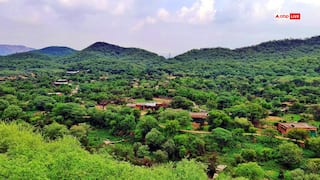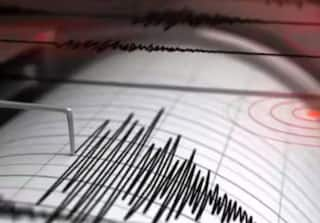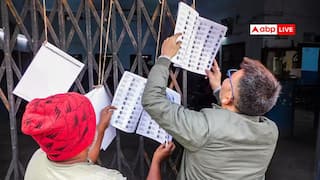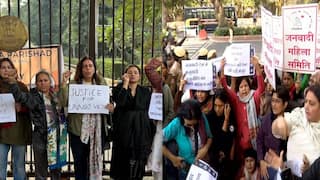Morbi First Person: Dissecting A Tragedy That Was Totally Avoidable

Morbi: In a small town like Morbi, there are no Marine Drives, Gateways of India, India Gates or Lal Qilas. For the average residents of the town, known globally for its ceramic tiles industry, there are not many choices to spend their weekends with their family. Hence, when the cable-stayed “jhoolto pul” or swinging bridge over Macchu river was thrown open for the public last week, Morbites thronged it in hundreds — parents carrying infants in their arms, youngsters with their mobile phones taking selfies and many others who were excited to experience the new attraction.
The swinging bridge across the Macchu river was not “new” as such. It was over 140 years old and constructed by a regional monarch. However, six months ago, it was shut down for repairs. The Oreva company, known for manufacturing clocks, was given a contract to repair and maintain it. The company was allowed to levy tickets on the users stepping onto the bridge.
When the bridge was opened on the third day of Diwali, which is considered the new year day by Gujaratis, there was neither clearance from the civic authorities, nor any audit of its stability. The bridge was originally slated to reopen in December after repairs. However, it seems the keepers of the bridge wanted to capitalise on the festive fervour. Hence, they issued tickets and didn’t bother about the number of visitors. Seeing the crowd, the personnel of Oreva were not alarmed. They saw it as a money-making opportunity. The tickets were sold at an illegally hiked price. As per the contract with Morbi Municipality, the price of a ticket was fixed at Rs 15 for adults and Rs 10 for children. But it was sold at Rs 17 and Rs 12, respectively, on October 30, a Sunday.
October 30 was also the last holiday of the festive season. Monday onwards, markets and businesses were to restart as usual. Many who had come to Morbi for a family get-together from distant places planned to spend the evening on the bridge and visit the three temples located next to the river. By 6.30 pm, the crowd surged up to 600 people on the bridge, which could hold just 100. That evening, it appeared as if the entire Morbi was headed towards the Jhoolto Pul. Just three hours before, a family from Ahmedabad who went to see the bridge immediately exited from it, scared, after noticing the surging crowd. They pleaded with Oreva employees to stop more people from entering the bridge, but their concern was not heeded. Such a rush towards a particular location should have alerted the local police, and deployments for crowd control should have been made. The Oreva personnel should have been restrained from selling more tickets and excess people on the bridge should have been ordered to leave. But there was no police presence. Some enthusiastic youngsters jumped on the bridge, as usual, to experience its vibrations. After all, it was a jhoolto pul and one should get the feeling of a swing while moving on it! While it is still under investigation if that triggered the fall, the overloaded bridge did reach a breaking point some time and the cables holding the bridge gave in, making the people fall into the water below. All the excitement was replaced by horror in a moment. Screams of people echoed in the area.
The Macchu river, which originates from Rann of Kutch and passes through three districts of Gujarat, covering 130 kilometres, is not much deep at Morbi, but deep enough for infants and non-swimmers to get drowned. Many became lifeless minutes after falling into the water. A few clung to the broken cables. While they were unsure about their own survival, they were horrified to see many people getting drowned in front of them. The dead bodies of little children were floating all around. Darkness had replaced the evening twilight and for some time there was no visibility, except a bit from the waxing crescent moon above. Later on, floodlights were arranged.
The first rescuers were the local people who were not on the bridge at the time of the accident. Those who knew how to swim jumped into the water and pulled out anybody they found, dead or alive. Five youngsters named Arif, Bashir, Ramzan, Amir and Iliyas who stayed close to the banks of Macchu heard the cries and plunged into the river. They focussed on pulling out infants, some of whom were still breathing. Many, however, chose to be onlookers and got busy recording videos of the distressed people on their camera phones. The first team of the local police reached around 20 minutes later in a Bolero. The cops jumped into the river while in their uniform. Morbi being a small town, the emergency services were never prepared for a catastrophe of such a magnitude. Help was sought from the administrations of neighbouring districts like Rajkot and Kutch, which took over two to three hours to reach. By this time, national and international news channels had broken the news. All Hindi channels switched from Bihar’s Chhat Puja coverage and focused on the tragedy. The central government mobilised all three wings of the armed forces along with the NDRF and the Coast Guard. They reached past midnight. The only job that remained for them was to search and retrieve the dead bodies scattered across the rivers. There was no hope of finding anyone alive.
There was chaos in the hospitals. Relatives of those who were missing were rushed to the Morbi General Hospital. There were neither enough beds nor enough doctors to tend immediately to the incoming victims. Many people were taken to private hospitals as well. Sirens of ambulances and cries of distraught relatives subdued every other sound on the premises. Apart from cases of drowning, there were people injured because of a collision with the rocky patch of the river and the cables. The bodies were handed over to relatives immediately after a person was declared dead.
The crematoria of Morbi were overwhelmed with the number of bodies coming in for the funeral. There are five crematoria in Morbi where the bodies are queued up. Some bodies were directed to three other crematoria in nearby villages. The street leading to the Muslim graveyard was also brimming with mourners.
By the third day of the tragedy, 136 people were dead, and most of the victims were children and women. As many as 56 of the deceased were minors, with 31 among them below 10 years of age. Almost every neighbourhood of Morbi and every nearby village had lost a few people. I visited Khanpar, a village 22 kilometres away from Morbi. Khanpur lost six villagers belonging to the Amratiya family that included one man, three women and two teenage girls. The family lost six other relatives too who stayed in a different village. All 12 victims were the relatives of Rajkot MP Mohan Kundariya, who had come for a family reunion on Diwali.
In Morbi, I met Jagdish Parmar, who lost his four relatives in the tragedy. Parmar’s nephew and his sisters’ three sons died due to drowning. His niece was battling for life in a private hospital. Shailesh Rayani, another Morbi resident, lost 12 relatives.
The family of Narendra Parmar, who was on the ill-fated bridge, was also struck by the tragedy. When the bridge fell, he was on it with his five-year-old son and ten-year-old daughter. While the son was rescued immediately by the locals, his daughter’s body was found an hour later. Most of the families affected were poor or belonged to the middle class.
The police registered a criminal case. Nine persons were initially arrested and slapped with charges like culpable homicide not amounting to murder, endangering the life and safety of people, and a few other sections. Among those arrested were small fries like two managers, two repair contractors, two security guards and two ticket clerks. Nobody from the Oreva management was named as an accused. Questions were raised why the FIR left out Oreva’s MD Jaysukh Patel. He is known as an influential businessman and is politically well-connected. The arrested accused defended themselves in court by saying the tragedy was “an act of God". The municipal authorities absolved themselves by claiming that they got to know about the opening of the bridge only after the tragedy. Interestingly, the news of the bridge’s opening had reached villagers several kilometres away from Morbi but not the civic officials who stay in Morbi itself.
Though it was being discussed that Rs 2 crore was spent on the repairs of the bridge, documents revealed that the contract was given for Rs 28 lakh only. The repair work was superficial. The rusty old cables were not replaced but just painted. Earlier, the flooring of the bridge was made of wooden rectangular blocks, but they were replaced with aluminium sheets, which increased the weight of the bridge, adding to its vulnerability. As per the police, the repair work was outsourced by Oreva to a small-time firm, Devprakash Solutions, which took contracts for welding but had no experience in structural engineering. While inaugurating the bridge, Jaysukh Patel claimed that the bridge would sustain for the next 15 years if the people used it responsibly.
The residents of Morbi were furious against Oreva, but I met a few people who showered praises on the company. “He (Jaysukh Patel) did the repair work with good intentions for the benefit of people. If an accident has happened, why is he being held responsible,” said an elderly man.
The bar association of Morbi resolved that none of their members would take up cases of the accused as defence lawyers. They also organised a silent protest match from the court to the accident spot. Morbi was completely shut down a day after the tragedy and a state of mourning was observed on November 2.
On the third day after the tragedy, PM Modi decided to visit Morbi. The administration swung into action, beginning with a makeover of the civil hospital. The walls were painted overnight and the rooms were decorated with pictures. Old sheets and linen on beds were replaced. A water cooler was installed. The road from the helipad to the civic hospital and then to the superintendent of the police officer was repaired too. Some patches along the roads were covered with curtains so PM Modi’s eyes would skip anything ugly or unpleasant. Perhaps, it was to give the impression to Modi that the Gujarat model of governance, which led him to the PM’s chair in 2014, still existed in the state. Good roads, neat and clean hospitals, cleanliness, and disciplined administration were some elements of Modi’s famed Gujarat model.
Since the Gujarat Vidhan Sabha polls are a few days away, the opposition parties left no stone unturned to question Modi’s visit. Why he reached Morbi after three days? Why he didn’t cancel all his events and rush immediately to Morbi? Modi had anticipated such criticism and at every event, he attended after the news broke he mentioned how though his heart was with the aggrieved families of Morbi, his duty compelled him to attend the current event. Perhaps, some of those events he wouldn’t have been able to attend after the model code of conduct were implemented.
Nevertheless, Modi attended all the pre-scheduled programmes and visited Morbi as well. During his one and half-hour visit to the town, he went to the accident spot and expressed his anger and sadness. He then moved to the civil hospital and checked on the injured. After he left, an injured woman told journalists: “We don’t have any hopes from the government.” From the hospital, Modi reached the SP office where 26 relatives of the deceased victims were called to meet him. Modi assured them all of the help from the government and promised to take action against the culprits. Then he discussed compensation to the victims with the officials and returned to Delhi.
I spoke to Mahendrabhai, a resident of Morbi, who said there is a superstitious belief prevailing in the town that some mammoth tragedy happens in Morbi after every 21-22 years. “In my 45 years of age, I have seen the calamity of 1979 when the Morbi dam broke in a deluge and hundreds of people were drowned. 22 years later in 2001, Morbi was devastated by an earthquake and again after 21 years this has happened.”
In my 25 years long career as a journalist, I have covered numerous calamities. It is said when a human is exposed to too much death and bloodshed, he becomes emotionally numb and his sensitivity dies. However, this is not always true. Months after covering the 26/11 attacks, the sound of gunshots continued to disturb my sleep. The images of weeping parents who lost their little children in the Morbi tragedy are also refusing to go away from my mind.
[Disclaimer: The opinions, beliefs, and views expressed by the various authors and forum participants on this website are personal and do not reflect the opinions, beliefs, and views of ABP News Network Pvt Ltd.]


























